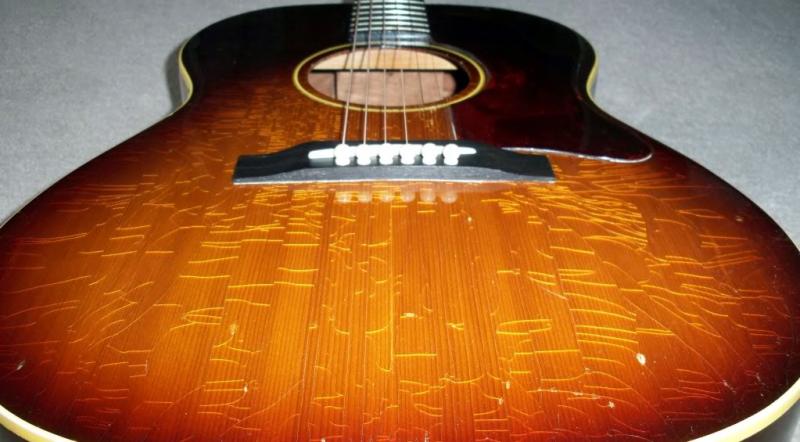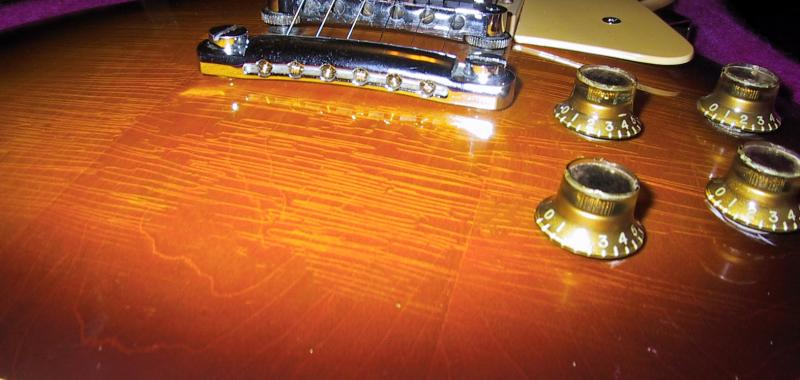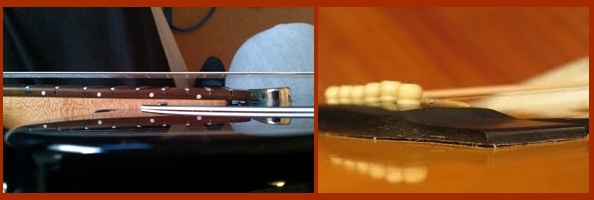Your Cart is Empty
NOW FREE SHIPPING TO 48 CONTIGUOUS UNITED STATES ON ALL ORDERS!!!
Cold Weather Guitar Care and Precautions
by vaughn skow February 20, 2015 3 min read

As I pen this blog, the entire eastern half of the nation is in an icy, snowy deepfreeze. Everywhere I look I see downed trees, and the news is full of the snow and ice-induced carnage of collapsed roofs and interstate pile-ups. Okay, so I think we all agree that this type of weather sort of sucks … but the question every GUITAR PLAYER should be asking themselves is this: How does this affect my guitar? Let’s talk about that! Hint, if you want to go straight to the “what to do” check-list, feel free to skip ahead to the end.
My first lesson in how sub-freezing temps affect a guitars finish came back in about 1987. I was playing on the road with then country super-star Tom T. Hall. It was one of my first “buss gigs”, and for the most part the gear rode in the unheated bays below the bus. I was REALLY green and didn’t think to bring my acoustic up into the buss as we headed into the north-east states for a Christmas tour. You guessed it, the guitar that went into the bay perfect came out with a finished cracked to pieces. Today, I guess we’d call it “reliced”, but in 1987 it was just called UGLY. The lesson learned: guitar finishes can crack when frozen hard. Now, it’s true that certain finishes will crack worse than others, with acoustics being particularly prone to cracking, but given a hard enough freeze, nearly all guitar finishes can be susceptible. The problem is that the finish shrinks at an entirely different rate than the wood it’s on; the result is cracks, baby!

Which brings me to neck warping and bridge pull-away. Once again, the steel strings will shrink at an entirely different rate than the wood of your guitar. This can cause neck warping and twisting. Also, as the air gets not only colder, but drier as well, the glue holding an acoustic together loses much strength, which, combined with tightened strings, can lead to bridge pull-away on acoustics.

And last, speaking of dry air, even if your guitars are never anywhere near sub-freezing temps; they are almost undoubtedly exposed to much, much drier air in the cold winter months. Very dry air wreaks havoc upon ALL guitars, not just acoustics. ALL guitars can end up with the fret ends extending uncomfortably beyond the edges of the finger-board due to the wood shrinking up. You can also expect ANY guitar to need a little truss-rod tweaking in the cold and dry months (which will again need attention in the hot and humid months). When guitars get very dry, the wood shrinks and cracks, and the glue that holds them together shrinks and fails. Not good! Your guitar may in fact get SO DRY that is takes some drastic re-humidification to even get it acceptably playable again. The following list is from Taylor Guitars,
A dry guitar can exhibit some or all of the following symptoms:
1. Low action. Strings are very close to the fret-board.
2. Hump on fretboard where neck joins body.
3. On NT necks, a slight gap around the fretboard extension.
4. Sunken top across the soundboard between bridge and fingerboard.
5. Back of guitar looks very flat when it is dried out.
6. Sharp fret ends extend beyond the edge of fret-board.
7. The plane of the neck angle on a dry guitar hits above the top of the bridge.
Yikes! That sounds like something to be avoided at all costs! The entire pdf from Taylor on“Symptoms of a Dry Guitar” can be found here.
Okay, convinced? Well then here is your simple check-list for proper cold and dry weather guitar care.
Unless you are looking to relic your guitar with a prematurely checked finish, do everything you can to keep it from freezing. A sub-zero “hard-freeze” is particularly dangerous.
Be prepared to do a little truss-rod adjusting as the seasons change. If you are not comfortable doing this yourself, take it to a pro.
Use humidifiers in the rooms where you store your guitars, especially acoustics. Ideally, the humidity should not be allowed dip below about 30-40%.
In drastic cases, or when you cannot humidify an entire room, use guitar-humidifiers like the ones made by Oasis Guitar Humidifiers. Read Taylors excellent pdf on using a guitar humidifier here.
So there ya go. That’s not so bad, is it? Now get to it, and I’ll talk to y’all again next week; until then, stay warm and keep those guitars happy!
Leave a comment
Comments will be approved before showing up.
